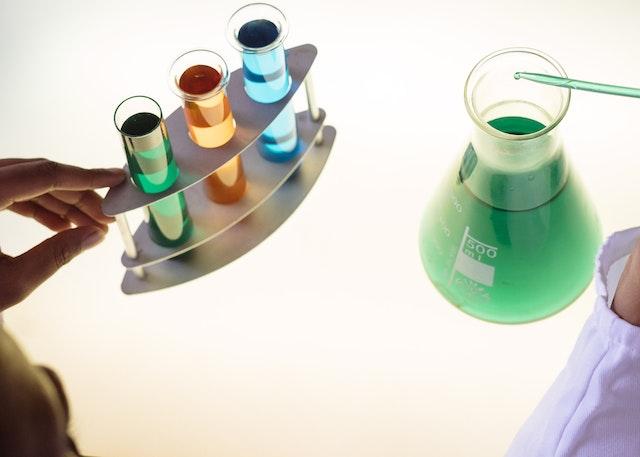Are you familiar with sodium permanganate? This powerful oxidizing agent has numerous applications, from water treatment to medical treatments. But did you know that sodium permanganate goes by another name? In this blog post, we'll explore the many uses of this chemical compound and reveal what it's commonly called. Plus, we'll discuss how to make it yourself and the potential hazards associated with its use. So let's dive into the world of sodium permanganate exporters in India!
What is sodium permanganate?
Sodium permanganate is a chemical compound with the formula NaMnO4. It's an odorless, dark purple crystal that dissolves easily in water, making it a popular choice for various applications. One of the most significant uses of sodium permanganate is as an oxidizing agent and disinfectant sodium permanganate manufacturers in Chile.
In addition to its usefulness in water treatment, sodium permanganate also has medical applications. It can be used to treat skin infections, such as eczema and fungal infections. Moreover, it's sometimes used in foot baths to prevent infection.
Sodium permanganate is also valuable for industrial purposes. For example, it can be used as a catalyst in chemical reactions or as part of the production process for certain chemicals.
Sodium permanganate plays a crucial role in many industries due to its strong oxidizing properties and effectiveness at eliminating harmful microorganisms. However, it's essential to handle this chemical with care and follow proper safety procedures when using it due to its potential hazards if mishandled or misused.
The many uses of sodium permanganate
Sodium permanganate, also known as NaMnO4, has a wide range of applications in various industries. It is an oxidizing agent and can be used for water treatment, medical purposes, and even in the production of certain chemicals.
One of the most common uses of sodium permanganate is as a disinfectant. Its strong oxidizing properties make it effective at killing bacteria and viruses. It can be used to treat wounds or infections on humans or animals.
In addition to its use as a disinfectant, sodium permanganate is widely used in the water treatment industry. It can help remove impurities from drinking water by breaking down organic compounds that may be harmful to human health.
Sodium permanganate is also commonly used in chemical manufacturing processes. It can be added to certain reactions to help produce specific products or remove unwanted impurities.
Another interesting application for sodium permanganate is in firework displays. It gives off a bright purple color when ignited, making it popular among pyrotechnicians.
Sodium permanganate has many versatile applications across various industries due to its strong oxidizing properties and ability to break down organic compounds.
How to make sodium permanganate
Sodium permanganate is a powerful oxidizing agent that has many applications in various industries. If you want to make sodium permanganate, there are different methods available, but the most common one involves using potassium permanganate as a starting material.
To begin with, dissolve 80 grams of potassium permanganate crystals in distilled water and add 50-60 ml of concentrated hydrochloric acid slowly while stirring vigorously. Keep adding the acid until all the potassium permanganate crystals have dissolved completely.
Next, heat the solution on a hot plate or stove to about 70-80°C and then carefully add some sodium carbonate powder while stirring constantly until no more effervescence occurs. Continue heating for another hour while stirring occasionally.
Filter off any precipitates or impurities from the solution through filter paper and allow it to cool down gradually. Once cooled down completely, store your homemade sodium permanganate in an airtight container away from direct sunlight.
Making sodium permanganate can be dangerous if proper precautions are not taken such as wearing protective gear like gloves and goggles throughout the process. It's important to follow instructions closely when working with chemicals like these!
The dangers of sodium permanganate
Sodium permanganate is a powerful oxidizing agent that can cause harm if not handled properly. It should be noted that sodium permanganate must never come into contact with combustible substances, as it may ignite and result in fire or explosion.
Inhaling sodium permanganate dust or fumes can also have serious health effects on the respiratory system. Inhalation may cause irritation to the nose, throat, and lungs leading to coughing, wheezing, difficulty breathing, and chest pain.
Sodium permanganate should always be stored in an area that is cool and dry. Exposure to heat or moisture can cause it to break down which could lead to an increase in pressure inside its container possibly causing explosions.
It’s important for personal protective gear such as gloves, goggles and face masks are used when handling sodium permanganate. In case of accidental eye exposure- flush eyes immediately with water for at least 15 minutes while seeking medical attention promptly thereafter.
To avoid any dangers associated with this chemical compound one must handle it carefully following all safety precautions listed by manufacturers and experts alike.
Conclusion
Sodium permanganate is a powerful and versatile chemical compound with many uses in various industries. It can be used as an oxidizing agent, disinfectant, water treatment solution, and even as a medication for certain skin conditions. However, it should always be handled with caution due to its potential risks.
As mentioned earlier in the article, sodium permanganate manufacturers play a crucial role in producing this useful compound on a large scale. Their expertise ensures that high-quality sodium permanganate products are available for use across different sectors.
Sodium permanganate has proven to be an indispensable substance for many applications over the years. Its ability to react with other chemicals makes it useful in several fields ranging from agriculture and health care to industrial production processes. As long as proper safety measures are followed when handling this powerful substance, it will continue to play an essential part in our daily lives.
Google Map - https://goo.gl/maps/XK9kyMmGQBds6ZdT6
